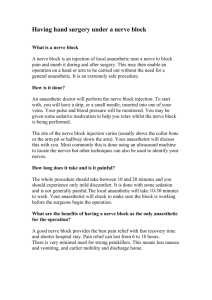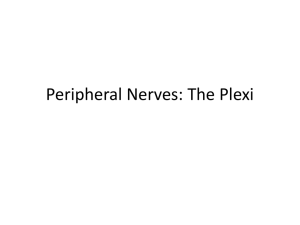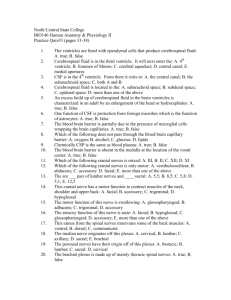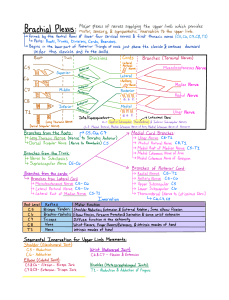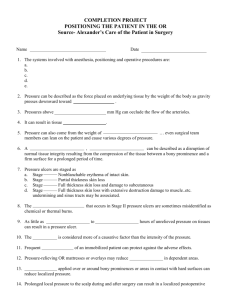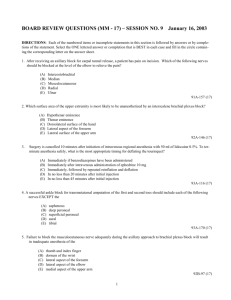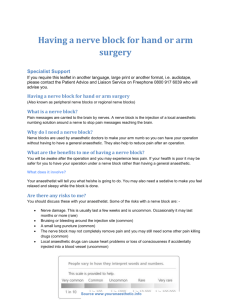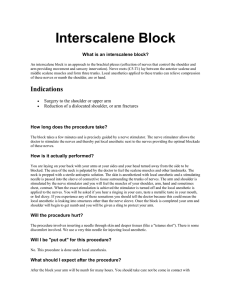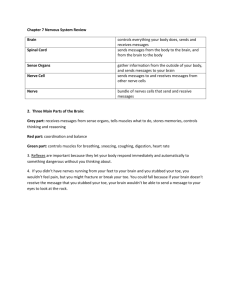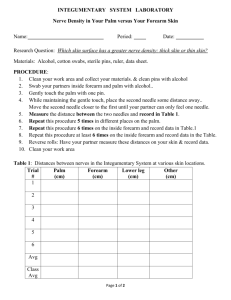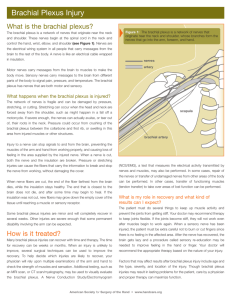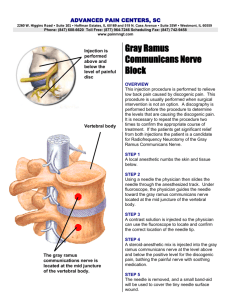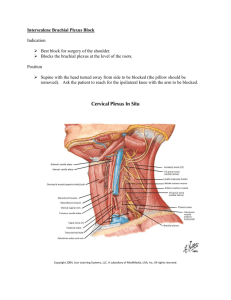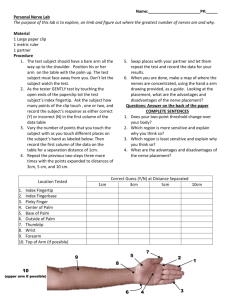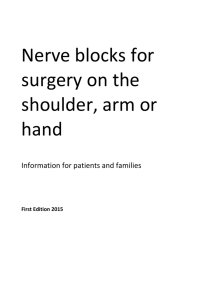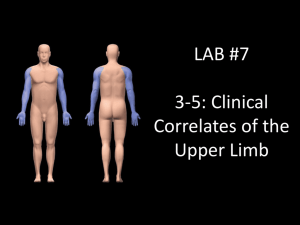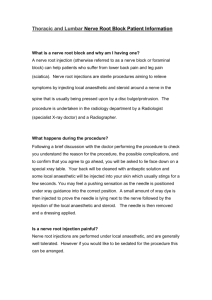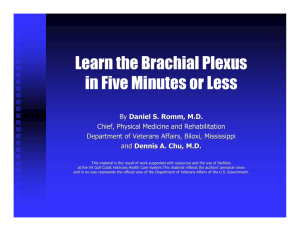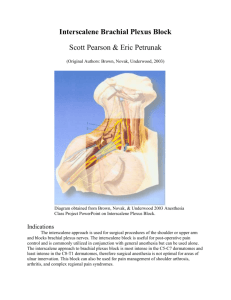For surgery on hand and forearm (Word)
advertisement
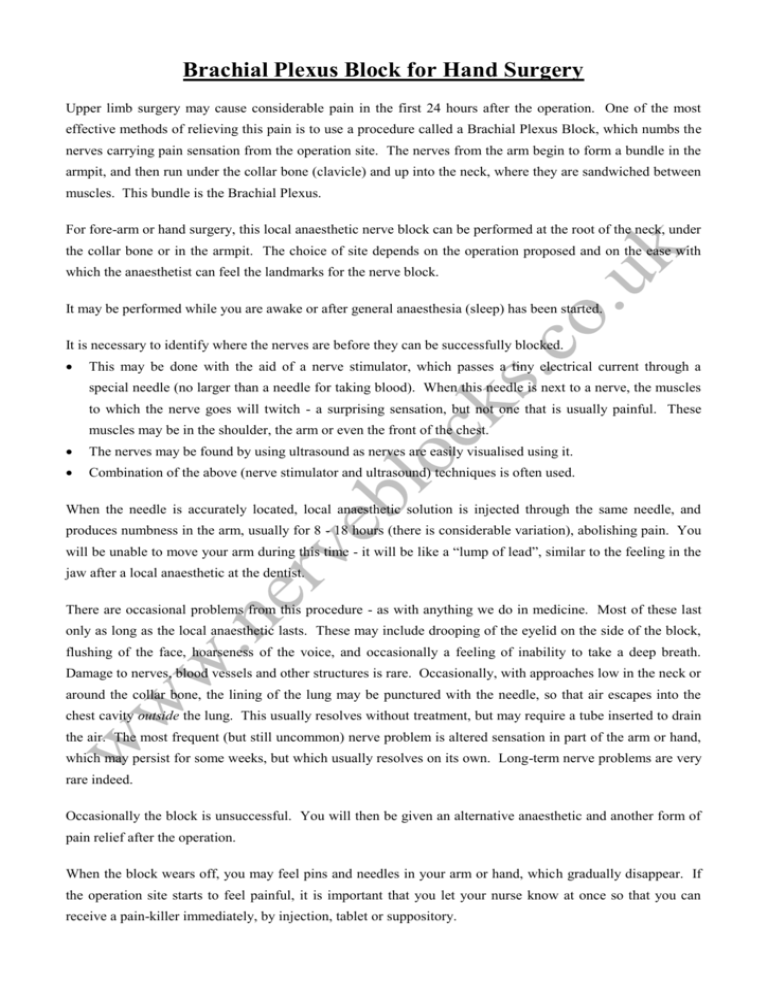
Brachial Plexus Block for Hand Surgery Upper limb surgery may cause considerable pain in the first 24 hours after the operation. One of the most effective methods of relieving this pain is to use a procedure called a Brachial Plexus Block, which numbs the nerves carrying pain sensation from the operation site. The nerves from the arm begin to form a bundle in the armpit, and then run under the collar bone (clavicle) and up into the neck, where they are sandwiched between muscles. This bundle is the Brachial Plexus. For fore-arm or hand surgery, this local anaesthetic nerve block can be performed at the root of the neck, under the collar bone or in the armpit. The choice of site depends on the operation proposed and on the ease with which the anaesthetist can feel the landmarks for the nerve block. It may be performed while you are awake or after general anaesthesia (sleep) has been started. It is necessary to identify where the nerves are before they can be successfully blocked. This may be done with the aid of a nerve stimulator, which passes a tiny electrical current through a special needle (no larger than a needle for taking blood). When this needle is next to a nerve, the muscles to which the nerve goes will twitch - a surprising sensation, but not one that is usually painful. These muscles may be in the shoulder, the arm or even the front of the chest. The nerves may be found by using ultrasound as nerves are easily visualised using it. Combination of the above (nerve stimulator and ultrasound) techniques is often used. When the needle is accurately located, local anaesthetic solution is injected through the same needle, and produces numbness in the arm, usually for 8 - 18 hours (there is considerable variation), abolishing pain. You will be unable to move your arm during this time - it will be like a “lump of lead”, similar to the feeling in the jaw after a local anaesthetic at the dentist. There are occasional problems from this procedure - as with anything we do in medicine. Most of these last only as long as the local anaesthetic lasts. These may include drooping of the eyelid on the side of the block, flushing of the face, hoarseness of the voice, and occasionally a feeling of inability to take a deep breath. Damage to nerves, blood vessels and other structures is rare. Occasionally, with approaches low in the neck or around the collar bone, the lining of the lung may be punctured with the needle, so that air escapes into the chest cavity outside the lung. This usually resolves without treatment, but may require a tube inserted to drain the air. The most frequent (but still uncommon) nerve problem is altered sensation in part of the arm or hand, which may persist for some weeks, but which usually resolves on its own. Long-term nerve problems are very rare indeed. Occasionally the block is unsuccessful. You will then be given an alternative anaesthetic and another form of pain relief after the operation. When the block wears off, you may feel pins and needles in your arm or hand, which gradually disappear. If the operation site starts to feel painful, it is important that you let your nurse know at once so that you can receive a pain-killer immediately, by injection, tablet or suppository.
